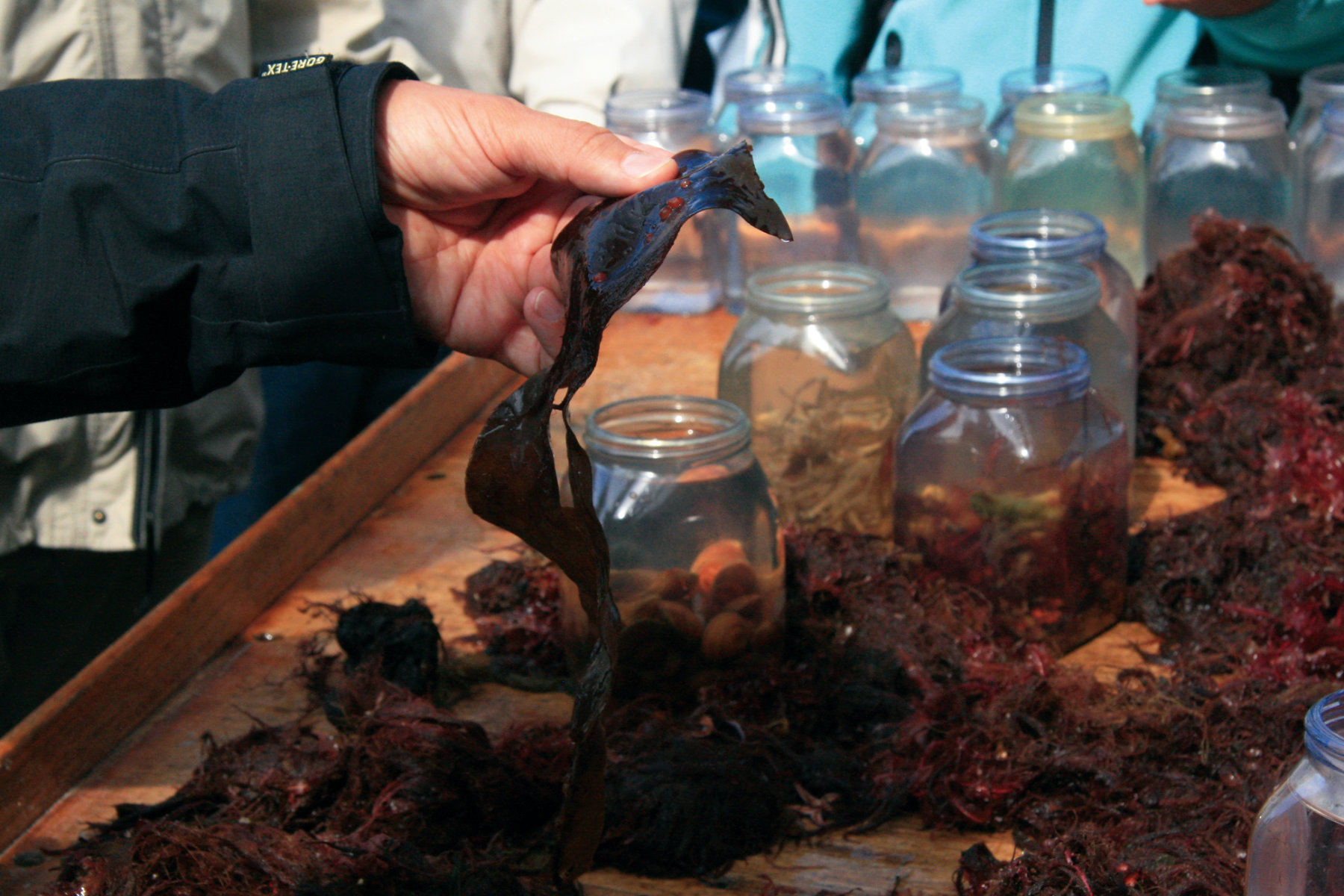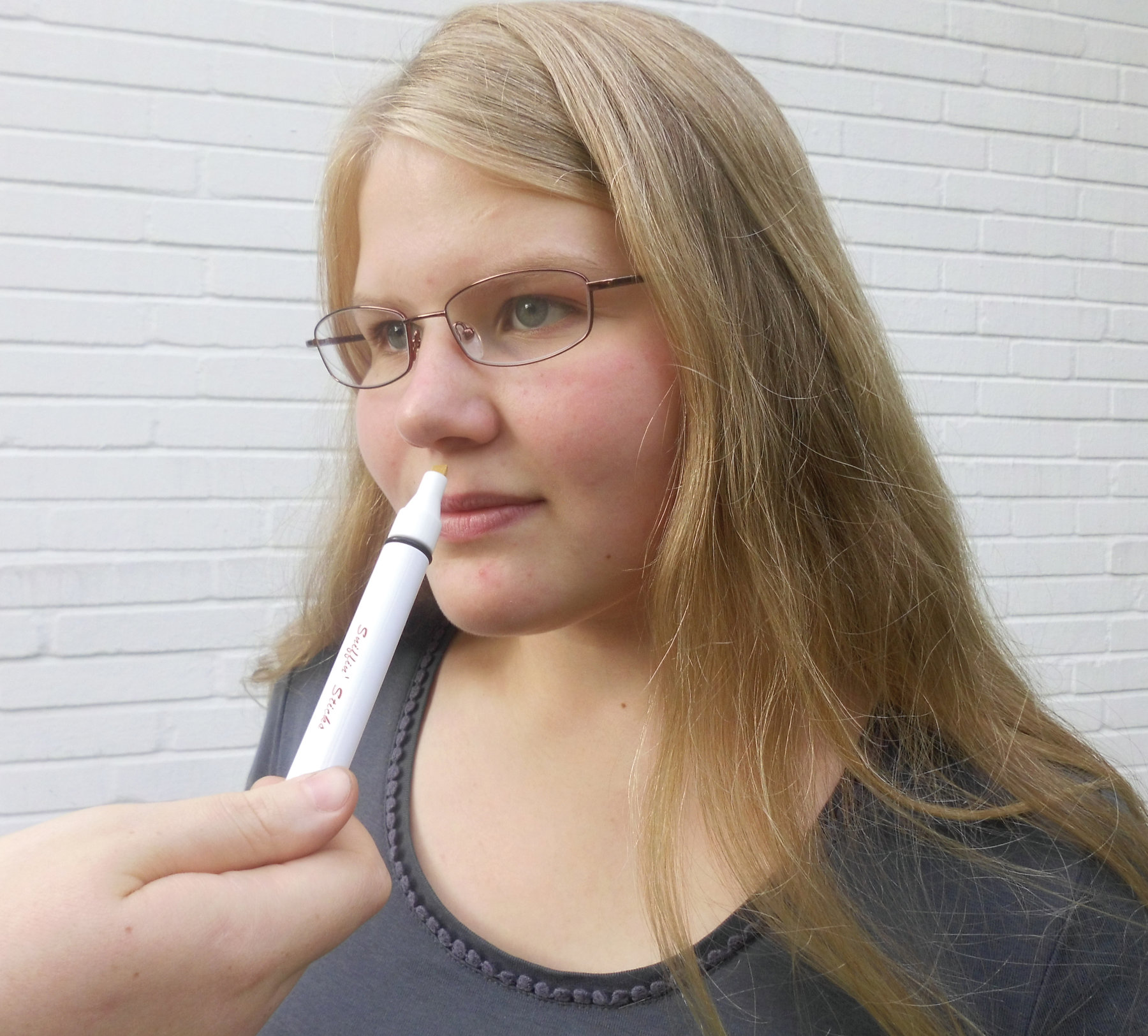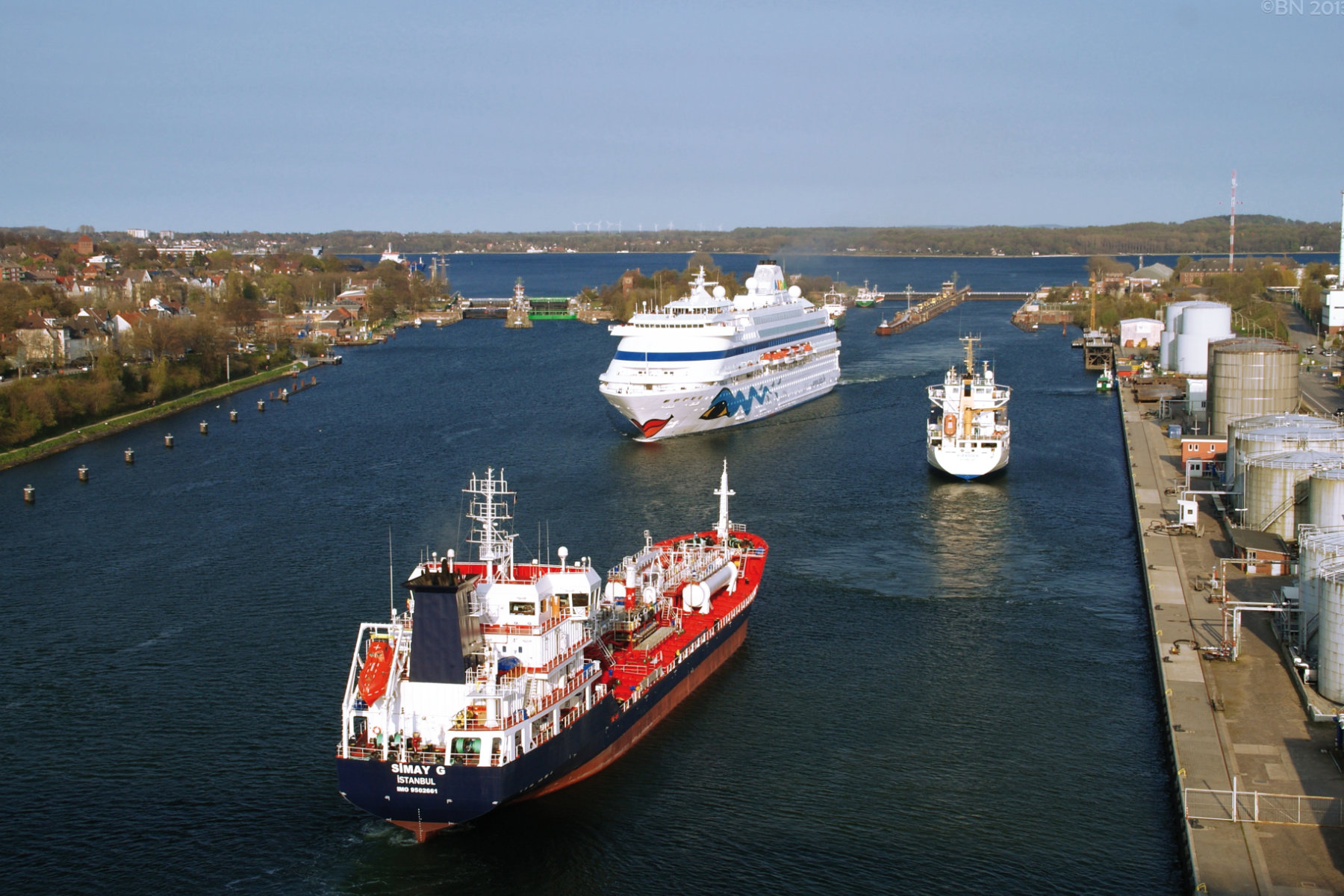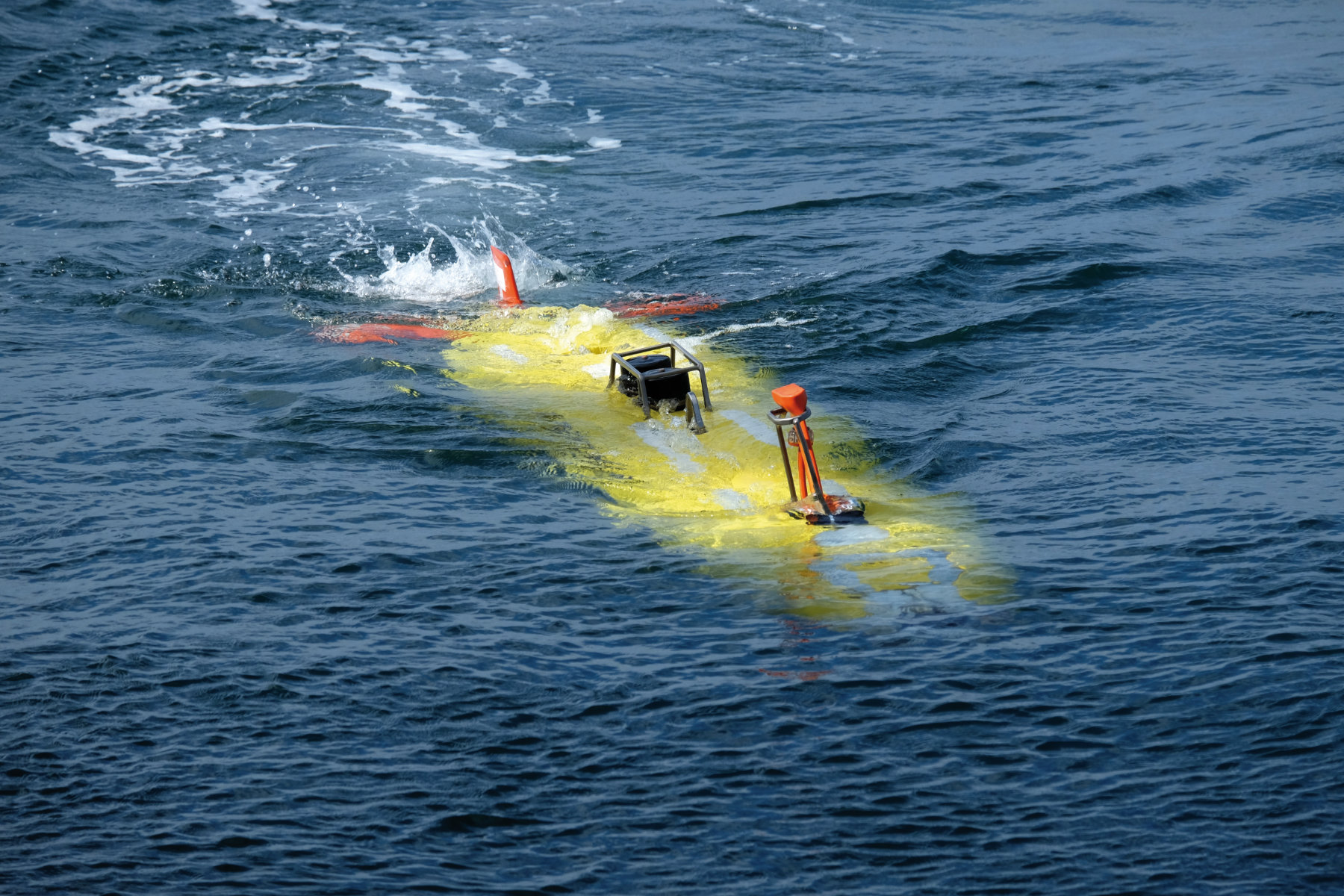Kiel marine research is not just about oceanography, chemistry and biology. It asks questions about the way we interact with the ocean. It comprises social sciences as well as the natural sciences, and is driven by insights from research in all the world's oceans and coastal regions.
Kiel researcher Barbara Neumann is looking at the interplay between people, and the oceans and coasts, and at the interactions between land and sea. Her work takes place in the context of sustainable development and global change. She says: “The existence of a Sustainable Development Goal (SDG) for the ocean and coasts within the UN’S 2030 Agenda for Sustainable Development means that we can develop a more normative idea of what development means in coastal regions. I am interested in the interconnectedness between different goals for sustainable development, and in their implications for the human and ecological systems of coastal regions. This involves social, cultural and economic considerations as well as environmental ones. And it requires consideration of which concept of sustainability is, or should be, applied by stakeholders or decision-makers.” [1, 2, 3, 4]
Neumann and her colleagues have been examining how SDG 14, which is concerned with the sustainable development and conservation of the oceans, seas and marine resources, might interact with other SDGs. The ocean has a massive role in carbon sequestration, so there is a strong interaction between SDG 14 and the goals on climate action which make up SDG 13. Martin Visbeck, a physical oceanographer at the GEOMAR Helmholtz Centre for Ocean Research in Kiel , explains that SDG 14 exists because of the votes of small island states which feel threatened by climate change. Big, rich nations were less keen on the idea, and would have preferred fewer SDGs. [2, 11]
Neumann says: “It turns out that interactions between land and sea are both positive and negative, and they run in both directions.” One strong negative correlation has to do with marine pollution caused by agricultural fertiliser use. Reducing nitrate runoff into the ocean may mean reduced food production, unless agriculture is optimised in a new way to succeed with lower chemical inputs. But she adds that today’s policy frameworks tend to produce more questions than solutions. “Systems of governance on land and at sea are very different,” says Neumann. “There needs to be better integration of land and ocean governance. For example, pollution does not stay still once it is in the sea. This means that we need to connect maritime governance to the way things are done on land, and in the rest of the world. At the moment, policy work in this area tends to point up the issues clearly, but is still less good at solving them.”

Society's interactions with the sea are complex. Researchers from Kiel have shown that marine businesses may be more sustainable than you think. But rebuilding agriculture to avoid polluting the ocean will be a complex social, economic and scientific task.
What role does the ocean play in human life? How do people think about the ocean? What part do maritime businesses play in shaping blue growth? What are the links between a healthy ocean and sustainable cities? What goals can society set for ocean management? And what do you smell when you go on holiday to the seaside? Does the aroma tempt you back, or does it force you to go somewhere else next year?
The Future Ocean initiative involves many types of research, from the natural to the social sciences, and all with a strong focus on ethics. The result is a deep understanding of how the sea affects our thinking and our everyday lives, from climate change to our summer holidays, and how we in turn affect the oceans. Kiel marine research looks at the impacts of human action, and at how to govern human activity to ensure the sustainable use and development of oceans and coasts.
Better measures
Neumann adds that we need better ways of monitoring sustainable development in terms of progress towards achieving the SDG goals and targets, including those for the oceans. She says: "It is vital to set the right indicators and benchmarks for monitoring progress. But it is also critical to decide which kind of monitoring framework, and what conceptual understanding of sustainability, is applied when weighing and balancing the measures we apply." She asks: "What are the topics we need to consider in making the right assumptions about progress in sustainable development, and what makes a good benchmark?" She thinks that some current thinking in this area is over-ambitious. There are plans for integrated indicators which tell a full story about social and environmental issues, but in practice it is impossible to make them effective. She is more interested in how far we can look in practice, and which indicators describe good and bad impacts in a useful way.

What’s that smell?
Why did you choose to go back to the same seaside resort for the second year running? Kiel ecologist Florian Weinberger says that your decision might be driven by signals from your nose as much as from your eyes and ears. The animals, plants and microbes that live in the sea are affected by global warming, reduced oxygen levels in the water, and pollution from sources such as agriculture. But this pollution does not turn the seafloor into a wasteland. Instead it encourages new species to drive out older ones.
In an ongoing and highly transdisciplinary project, Weinberger and colleagues investigate the perception of beach wrack by beach users. Weinberger says: “This change can influence what a tourist from Bavaria thinks when he comes to the Baltic coast. Part of the way he decides if he is seeing a good beach or a bad beach is the smell. If small filament-type algae replace larger species that were there before, the smell will be different and far less acceptable.” They also try to measure whether decomposing algae on the beach are more or less likely to deter tourists than litter or other deposits.
The hotel trade is interested in this research, as are tourist agencies and travel operators. And it is an obvious case of environmental change with big economic effects that can be explained to politicians. “It makes a clear link between agriculture and the health of the sea, in a way that affects people and business directly.”

How do we see the sea?
Ulrike Kronfeld-Goharani is an oceanographer turned political scientist. Her research has included work on maritime security and on the Soviet Union’s dumping of nuclear submarines in the Barents Sea.
She analyses texts to examine just what we mean by sustainability at sea. Goharani has asked hundreds of maritime businesses how they define the term, and analysed over 80 sustainability reports from oil and gas companies, tourism operators and other marine enterprises.
Her work reveals a fascinating change in business thinking about the oceans. She says: “In the past, this document used to be called the Environment Report. Now it has turned into the Sustainability Report, which has a wider role and adds an environmental and social dimension to the traditional measures of profit, or of return on investment to the shareholder. I have found that maritime businesses are exposed to massive pressure to meet the expectation of their employees, customers, shareholders and other stakeholders that they will prevent harm to the environment, save resources, respect human rights and follow international regulation. Because they operate globally, large companies can transfer ideas, visions and technologies around the world. And because of their bigger financial resources, they can implement more ambitious sustainability goals than conservation NGOs.” [7, 8]
However, Kronfeld-Goharani adds that the public themselves have only a faint impression of the size and significance of the oceans. “Ships move very rapidly through the sea, while containerisation means that the ocean is not regarded as part of the transport process any more. People do not see the ocean as a space in its own right and do not appreciate its dynamics, or the life and other resources it contains. Even on a cruise ship, the passengers are in their own space and have no connection to the ocean.”
As a solution, Kronfeld-Goharani calls for more stress on the literary and artistic aspects of the ocean. She has been involved in creating Kiel’s newly-published Ocean Atlas (see page 86) to tell people about the oceans, with an emphasis on how we use and change them.
Better knowledge of the ocean, she thinks, may create public demand for it to be treated better. Responses might include changes in the law of the sea to allow marine protected areas to be created in the high seas. We now know that the deep oceans are subject to serious pollution, from many sources ranging from plastic waste to excessive noise. This means that we need a framework for ocean governance that protects the oceans as well as guaranteeing the freedom to use them.
Who worries about the deep oceans?
Kiel researcher Erik van Doorn’s special concern is with fish that live mainly in international waters. These waters fall legally under the freedom of the high seas. This can result in an offshore version of the well-known “tragedy of the commons.”
He says that one solution is for the principles that govern the exploitation of minerals on the deep sea floor to be extended to the ocean’s living resources [9].
For example, he says, states should use the Law of the Sea Convention to define maximum sustainable yields for each fish species in their exclusive economic zone. Licences could be sold to allow this amount of fish to be caught, yielding financial benefits for states, for businesses and for people.
Van Doorn adds that his idea of “marine fish as the common heritage of humankind” is unlikely to catch on soon. “State sovereignty is still the utmost important pillar of international law.” But he also thinks that if statehood declines in importance and economic factors gain momentum, the idea might become more important. For this to happen, the victims of today’s overfishing system would have to speak out, along with intergovernmental and non-governmental organisations, as well as states that are willing to pay for a fairer solution.

Facing the consequences of our ocean activity
Marine research at Kiel has a uniting theme. It shows that today’s human activities have consequences for the physical and biological environment, and for people themselves, that demand new ecological, economic and personal choices.
We can all agree that it is good to be kind to nature, but there is less agreement on the right economic and philosophical approach to big environmental challenges. So Konrad Ott and his colleagues at Kiel are developing a new normative framework that they term “Strong Sustainability.” The idea, explains Ott, is to ensure that the amount of “natural capital” in any environmental system remains constant, be it an ocean or a forest [10]. By natural capital, he means any property of the system that contributes to human welfare. Animals, plants and clean water are obvious examples, but pleasing landscapes or relaxing surroundings would also count. To maintain this natural capital, it is necessary to invest in order to get damaged environments back into their original condition.
Ott says that decisions on Strong Sustainability call for qualitative judgements. For example, it might be right to devote special effort to restoring rare environments because of their contribution to natural diversity. It rejects the strictly economic calculations involved in the ecosystem services approach, which sets monetary values on green assets and takes account of intergenerational equity by trying to leave adequate natural capital for future generations.
Ott and Neumann are researching how this concept relates to SDG 14 and the sustainable use of oceans, seas, marine resources and coastal areas, which are mentioned in two of the targets within SDG 14. They argue that the SDG process might be regarded as an opportunity to address ocean and coastal challenges on a range of scales. But this requires a clear account of the underlying approaches, principles, and objectives. They say: “Since most of the SDGs refer to humanitarian aspirations, there are reasons to ground SDG 14, as one of the environmental SDGs, in a concept of sustainability that does not allow for ongoing substitution of natural capital, but provides for restoration, rehabilitation, and conservation.” [4]
Martin Visbeck points out that major ocean issues can only be solved by international agreement. And this is where things get complicated, because there is no single human view of the oceans. “In the Christian view, the ocean is given to mankind for use. It was regarded as human property and as being indefinitely large and impossible to ruin. Only more recently have we realised that the ocean is finite and that we can damage it.” In Asian culture, he adds, there is more emphasis on living in harmony with the ocean, and less on human ownership of it. So when these two cultures meet, it is not surprising that they often have trouble seeing each other’s standpoint.
Kiel research cannot of itself dispel these global cultural differences. But it can provide the scientific evidence for future action, alongside an analysis of the legal, economic, social and ethical issues that are inherent to our thinking on the future ocean.
References
[1] Brown, S., Nicholls, R. J., Woodroffe, C. D., Hanson, S., Hinkel, J., Kebebe, A. S., Neumann, B. und Vafeidis, A. T. (2013) Sea-level rise impact and responses: A global perspective. Coastal Hazards. Springer Netherlands, pp. 117-150. DOI 10.1007/978-94-007-5234-4_5.
[2] Neumann, B., Vafeidis, A., Zimmermann, J. und Nicholls, R. J. (2015) Future Coastal Population Growth and Exposure to Sea-Level Rise and Coastal Flooding - A Global Assessment Plos One, 10 (3).
[3] Visbeck, M., Kronfeld-Goharani, U., Neumann, B., Rickels, W., Schmidt, J., van Doorn, E., Matz-Lück, N., Ott, K. und Quaas, M. (2014) Securing Blue Wealth: The Need for a Special Sustainable Development Goal for the Ocean and Coasts Marine Policy, 48 . pp. 184-191. DOI 10.1016/j.marpol.2014.03.005.
[4] Neumann, B., Ott, K. und Kenchington, R. (2017) Strong sustainability in coastal areas: a conceptual interpretation of SDG 14 Sustainability Science . DOI 10.1007/s11625-017-0472-y.
[5] Schmidt, S., Neumann, B., Waweru, Y., Durussel, C., Unger, S. und Visbeck, M. (2017) SDG14 Conserve and sustainably use the oceans, seas and marine resources for sustainable development A Guide to SDG Interactions: from Science to Implementation. International Council for Science, Paris, pp. 174-218.
[6] Stevance, A.-S., Unger, S. and Neumann, B. (2017): Focus on Interactions to Make the SDGs a Success: Our Key Messages for the Ocean Conference. IISD SDG Knowledge Hub, 05 June 2017. URL: http://sdg.iisd.org/commentary/guest-articles/focus-on-interactions-to-make-the-sdgs-a-success-our-key-messages-for-the-ocean-conference/
[7] Kronfeld-Goharani, U. (2016) Understanding Sustainability on the High Seas. Discourses of Sustainability. Constribution to the Ad-hoc Group "Maritime Sociology: Polish and German Perspectives on a Sociology of Maritime Spaces" (Paper) In: 37. Conference of the German Sociology Association, 06.-10.10.2014, University of Trier.
[8] Kronfeld-Goharani, U. (2015) The Discursive Constitution of Ocean Sustainability Advances in Applied Sociology, 05 (12). pp. 306-330. DOI 10.4236/aasoci.2015.512030.
[9] Rickels, W., van Doorn, E., Quaas, M., Visbeck, M. (2017) Combine Sustainable Development Goal 14 with Future Ocean Spatial Planning, CGP Challenge, https://www.global-economicsymposium. org/about-the-ges/council-for-global-problem-solving/recommendations/combinesustainable- development-goal-14-with-future-ocean-spatial-planning
[10] Ott, K. (2015) Conceptual grounding on the biodiversity - poverty nexus, https://sustainabledevelopment.un.org/content/documents/7420Chapter%203_Ott_Conceptual%20grounding%20biodiversity-poverty%20nexus_Future%20Ocean.pdf


